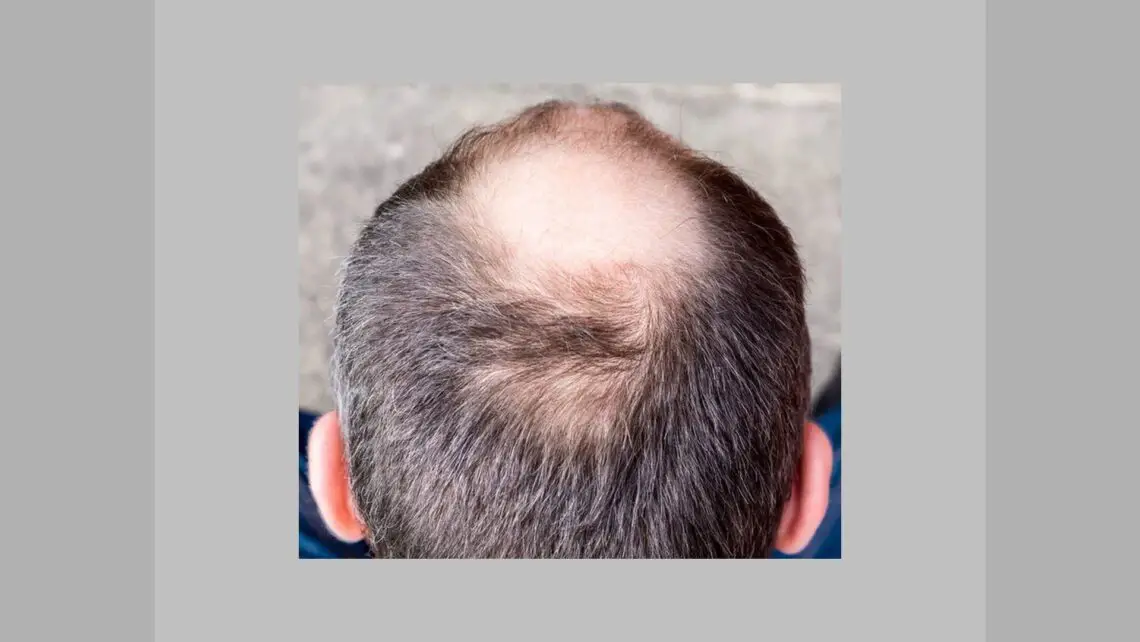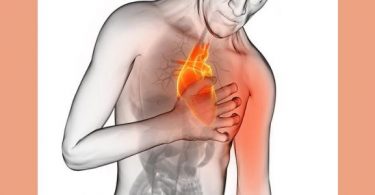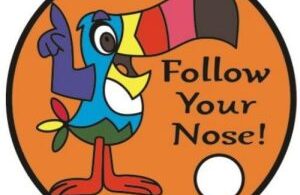ABSTRACT
Hair has no vital function in humans, yet its psychological functions are extremely important. Scalp hair grows in an active growing phase called Anagen phase then enter resting (Telogen) phase at the same time and shed simultaneously called Talogen effluvium. This article is an attempt to understand causes and treatment of hair disorders through homoeopathic medicines.
Keywords- Hairfall, Alopecia, Scalp, Fibres, Traction, Autosomal, Dandruff, Baldness
INTRODUCTION
The average daily hair loss is 25-100 hair fibres and any alteration in the hair growth cycle causes an increase shedding of scalp hair.
Figure 1: Showing types of hair disorders
Alopecia
This is a condition characterized by fragmantary or complete loss of hair which is clinically presented as thin, patchy, partial hair loss or complete baldness. In these cases, there is permanent loss of the hair follicle (irreversible condition). It may occur due to infective and inflammatory conditions with cases of physical or chemical trauma. Considering permanent loss of hair there is no effective therapeutic treatment and hair transplantation is recommended. In non- cicatricial reversible conditions, hair follicles are open and visible. It is further divided into localised and generalised alopecia.
Hirsutism
This is a clinical condition characterised by immoderate terminal hair distribution in women similar to males, which occurs due to excessive secretion of androgens from either the ovaries or the adrenal glands. The ovarian causes include polycystic ovarian syndrome and ovarian tumors that can be benign or malignant. Adrenal causes for hirsutism are congenital adrenal hyperplasia, and adrenal tumors. Pituitary causes are Cushing’s disease, acromegaly (Homeopathy Treatment for Acromegaly) and prolacting secreting adenomas. Another cause of hirsutism is hypothyroidism.
Hypertrichosis
Hypertrichosis is excessive hair growth of terminal hair which is not dependant on androgen levels. It may be congenital and acquired. The congenital are due to an X linked dominant trait and the acquired are caused by internal malignancies or secondary to certain drugs. Sites of hair growth are forehead, neck, lower back.
Common causes of hair disorder are genetic factors, nutritional, endocrinal abnormalities, systemic illness, mental stress, drug intake, hair shaft abnormalities1, cosmetic causes like prolonged traction, vigorous use of brush rollers, use of hot combs and prolonged pressure (bed ridden patients and infants) on the scalp. Some factors them are discussed below:
- 1. Genetic factors: There is an autosomal gene which is responsible for hair loss. Dominant or recessive inheritance is found in some people.2
- Nutritional factors: Chiefly, dietary elements for healthy hair are protein, iron and zinc; deficiency of these elements results in symptoms like fine, dry, lusterless and brittle hair which breaks easily. It is also present in some systemic disorders.
- Cosmetic causes: Hair becomes weak by constant exposure to chemicals and different hairstyles like braiding and ponytails3. The quality of hair becomes poor by friction and combing.
- Endocrinal causes3: Occurs in some cases of hypothyroidism, hyperthyroidism, hypoparathroidism, diabetes mellitus and consumption of oral contraceptives.
Common hair disorders are alopecia (areata androgenetic alopecia traction alopecia, tinea capitis, alopecia universalis ectodermal dysplasia)3, hirsutism (excessive terminal hair growth in female similar to males which is androgen dependent) 3and hypertrichosis(excessive terminal hair in any part of body which non androgen dependent) 3 and pre mature greying of hair.
Homoeopathic medicines commonly used in cases of hair disorders are:
Anantherum muricatum7– It’s one of the best suited remedies for falling of hair from beard and eyebrows along with deformed nails, boils and ulcers.
Carbo vegetabilis7– The chief indication for the remedy is falling of hair after severe disease or abuse of mercury with great sensitiveness of scalp to pressure at back of head which gets worse, evening; night and open air; cold; from fat food, butter, coffee, milk, warm damp weather; wine. Better, from eructation, from fanning, cold.
Cantharis vesicatoria7–The well indicated remedy for hair loss when combing, especially during confinement and lactation. Worse, from touch, or approach, urinating, drinking cold water or coffee. Better, rubbing.
Graphites7– Indicated for falling of beard and eyebrows which gets worse, from warmth, at night, during and after menstruation. Better, in the dark, from wrapping up.
Kalium carbonicum7 –One of the best remedies where there is great dryness of hair and it falls out. The patient is worse, after coition; in cold weather; from soup and coffee; in morning about three o’clock; lying on left and painful side. Better, in warm weather, though moist; during day, while moving about.
Lycopodium clavatum7– Indicated where hair has become grey early and there is premature baldness. Worse, right side, from right to left, from above downward, 4 to 8 pm; from heat or warm room, hot air, bed. Warm applications, except throat and stomach which are better from warm drinks. Better, by motion, after midnight, from warm food and drink, on getting cold, from being uncovered.
Manicnella7– It is a well indicated remedy when there is loss of hair after severe acute diseases.
Natrium muraticum7– Hair falls out if touched, mostly on forepart of head, temples and beard. Worse, noise, music, warm room, lying down about 10 a m;, at seashore, mental exertion, consolation, heat, talking. Better, open air, cold bathing, going without regular meals, lying on right side; pressure against back, tight clothing.
Nitricum acidum7– The best suited remedy for profuse falling of hair especially of vertex with eruptions. Also from debility and emaciation. Worse, evening and night, cold climate, and also hot weather. Better, while riding in carriage
Phosphoricum acidum7– It’s well indicated remedy for hair that turns grey early in life and falls out. Better, from keeping warm. Worse, exertion, from being talked to; loss of vital fluids; sexual excesses. Everything impeding circulation causes aggravation of symptoms.
Phosphorus7– Round patches of scalp on forehead and on the sides above the ears, completely deprived of hair with copious dandruff. Worse, touch; physical or mental exertion; twilight; warm food or drink; change of weather, from getting wet in hot weather; evening; lying on left or painful side; during a thunder-storm; ascending stairs. Better, in dark, lying on right side, cold food; cold; open air; washing with cold water; sleep.
Selenium metallaicum7– Hair falls off when combing and hair loss from eyebrows, whiskers, beard and genitals. Worse, after sleep, in hot weather, draught of air, coition.
Sepia officinalis7– Hair loss after chronic headache and dandruff. Worse, forenoons and evenings; washing, laundry-work, dampness, left side, after sweat; cold air, before thunder-storm. Better, by exercise, pressure, warmth of bed, hot applications, drawing limbs up, cold bathing, after sleep.
Sphingurus martini7– Falling of hair especially from beard and whiskers.
Sulphur7– The patient is worse from washing. Worse, at rest, when standing, warmth in bed, washing, bathing, in morning, 11 am, night, from alcoholic stimulants, periodically. Better, dry, warm weather, lying on right side, from drawing up affected limbs.
Thuja occidentalis7– When there is white scaly dandruff, hair is dry and falling out. Worse, at night, from heat of bed; at 3 am and 3 pm; from cold, damp air; after breakfast; fat, coffee; vaccination. Better, left side; while drawing up a limb
Rubrics regarding hairfall found in the Repertory of J.T. Kent4 :
- HEAD – HAIR, – falling am-c. Am-m. Ambr. Ant-c. ant-t. apis ars-i. Ars. Arund. asc-t. aur-m-n. Aur-m. aur-s. AUR. Bar-c. bell. bov. bry. bufo Calc-p. calc-s. Calc. Canth. Carb-an. CARB-V. CARBN-S. carl. caust. Chel. chin. chlol. colch. Con. cop. Elaps ferr-ar. ferr-m. ferr-p. Ferr. FL-AC. Form. glon. GRAPH. hell. Hep. iod. kali-ar. Kali-bi. KALI-C. kali-i. kali-n. kali-p. KALI-S. kreos. LACH. LYC. Mag-c. manc. Merc-c. Merc. Mez. naja nat-c. NAT-M. nat-p. NIT-AC. nuph. oena. op. osm. Petr. Ph-ac. PHOS. plb. psor. rhus-v. sanic. sars. sec. Sel. SEP. SIL. Staph. sul-ac. SULPH. syph. tab. tep. THUJ. tub. ust. vesp. Zinc.
- EYE – HAIR falling from brows ail. alum. Anan. aur-m. hell. KALI-C. mill. plb. sel. sil. sulph.
- NOSE – HAIR of nostrils falls out Caust. Graph. iod.
- MALE GENITALIA – HAIR falling off nat-c. NAT-M. Nit-ac. Ph-ac. rhus-t. sars. Sel. Zinc.
- FEMALE GENITALIA – HAIR falling out NAT-M. Nit-ac. rhus-t. Sel. sulph. Zinc.
- SLEEP – DREAMS, – hair, – falling out mag-c.
- SKIN – HAIR falls out ars. Calc. carb-an. Carb-v. Graph. hell. kali-c. lach. Nat-m. op. phos. sabin. Sec. Sel. sulph.
Rubrics regarding hairfall found in Complete Repertory by Roger Van Zandvoort are:
- GENERALITIES – FALLING out of hair-ALUM. BELL. calc-f. CALC. carb-an. CARB-V. CAUST. GRAPH. hell-f. HELL. iod. kali-c. lach. lat-m. lepr. merc. NAT-C. NAT-M. NIT-AC. op. PH-AC. phos. pitu-p. rhus-t. sabin. sars. SEC. SEL. sil. sulph. tax. thal-s. thal. tub. ust. ZINC.
- MIND – DREAMS – body, body parts – hair – falling out-mag-c.
- HEAD – DRYNESS – hair – falling, and, with dandruff-KALI-C.
- HEAD – FALLING out, hair, alopecia- actin-a. adam. ail. all-c. all-s. alum. alumin-p. alumn. AM-C. AM-M. AMBR. anan. ANT-C. ant-t. anthraco. apis APISIN. arge-pl. arn. ars-i. ars-s-f. ARS. arund. asc-t. aster. aur-ar. aur-m-n. AUR-M. AUR-S. AUR. bac. bals-p. BAR-C. bar-s. bell-p. BELL. BORX. bov. bry. bufo calc-f. calc-i. CALC-P. calc-s. calc-sil. CALC. CANTH. CARB-AN. CARB-V. CARBN-S. carl. caust. cere-b. CHEL. CHIN. chinin-pur. chlol. chrysar. cinch. cinnb. colch. CON. cop. cory. crot-h. cub. cupr-s. cur. DULC. ELAPS equis-a. ferr-ar. ferr-m. ferr-p. FERR. FL-AC. foll. form-ac. FORM. glon. GRAPH. hell-f. hell. HEP. hyper. IGN. IOD. jab. kali-ar. KALI-BI. KALI-C. KALI-I. kali-n. kali-p. KALI-S. kali-sil. KREOS. lac-as. lac-e. LACH. lap-la. lat-m. lepr. lob. LYC. MAG-C. manc. med. menth. MERC-C. merc-f. MERC. MEZ. moni. morg-g. morg-p. naja nat-c. NAT-M. nat-p. NAT-SIL. NIT-AC. nuph. oena. ol-j. op. orig. osm. PAR. ped. PETR. PH-AC. PHOS. pilo. pitu-a. PIX PLB. plut-n. psor. puls. RHUS-T. rhus-v. rosm. rumx. sabin. sanic. SARS. SEC. SEL. SEP. sieg. SIL. SKOOK. sphing. spira. STANN. STAPH. stry-ar. sul-ac. sul-i. SULPH. syc. syph. tab. tax. tell. tep. teucr. THAL-S. thal. THUJ. thyr. trop. tub. URT-U. ust. vesp. VINC. wies. zinc-phic. ZINC.
- HEAD – FALLING out, hair, alopecia – gray hair, replaced by-
- HEAD – FALLING out, hair, alopecia – nails falling of, with- UST.
- HEAD – FALLING out, hair, alopecia – spots, in, alopecia areata – white hair grows in spots, and- vinc.
- NOSE – HAIR in nostrils – falling out CAUST. GRAPH. iod. sil.
- FACE – FALLING of hair – hair in nostrils-
- MALE – FALLING out, hair- bell. calc-f. hell. iod. NAT-C. NAT-M. NIT-AC. PH-AC. rhus-t. sars. SEL. thal. ZINC.
- FEMALE – FALLING out, hair- BELL. calc-f. hell. merc. NAT-C. NAT-M. NIT-AC. ph-ac. rhus-t. SEL. sulph. thal. ZINC.
- FEMALE – LEUCORRHEA – hair falling off from graph. LYC. NAT-M. phos. sulph.
- CHEST – FALLING out, hair, axillae-thal-s.
- EXTREMITIES – FALLING off – nails – hair, and-hell-f. hell. ust.
- SKIN – FALLS out, hair-ALUM. CALC. carb-an. CARB-V. GRAPH. HELL. kali-c. lach. lat-m. lepr. NAT-M. op. phos. pitu-p. sabin. SEC. SEL. sulph. tax. thal-s. tub.
Rubrics regarding hairfall found in Hering’s Guiding Symptoms of our Materia Medica by Calvin B. Knerr6 are :
Baldness (See Falling out.) :- All-s., Anac., Apis, Fl-ac.
- Crown, especially on :- BAR-C.
- Patch, circular (herpes tonsurans):- Lyc.
- Spots, large :- Hep.
- Spots covered with short woolly hair :-
- Spot, circumscribed, on front, covered with herpes :-
- Spot as large as a silver dollar, left side (after gonorrhœa):- Kali-s.
- Spot over right parietal :- Cupr-s.
- Premature : Sil.
- Spot as large as a 25 cent piece, on front part, glossy smoothness, hair around as if cut short at roots, place covered with dry crusty scales, soon after one on right side, soon after 4 spots :-
- Spots smooth and shining :- Graph.
- Tinea, chronic :-
- Young, in, people :- Bar-c., Sil.
- Falling out (See Baldness.):- All-c., , Am-m., Ambr., Ant-c., Apis, Ars., Asc-t., Aur-m., Aur-m-n., Bar-c., Bov., Bufo, Calc-p., Canth., Carb-an., Chel., Colch., Con., Ferr., Fl-ac., Form., GRAPH., Hell., Hep., Hipp., Iod., Jab., Kali-i., Kali-s., Kreos., Mag-c., Merc-c., Merc-sul., Nat-c., Osm., Petr., Phos., Sars., Sec., Sel., SIL., Sul-ac., Sulph., Syph., THUJ., Ust., Vesp.
- Abdominal, after, diseases :-
- Bunches, in :-
- Children, in :-
- Circular, in, patches, which become rough and dirty :- Ars.
- Gonorrhœa, after :- Kali-s., Thuj.
- Combing, when, handfuls, in :-
- Disease, acute, severe, after :-
- Eaten, chronic eruption has, off hair, surface raw, as if scalped :- Nat-m.
- Eczema :- Graph., Kali-bi.
- Eczema, oozing a corroding fluid :- Nat-m.
- Face puffed up (lying-in women):- Calc.
- Fever, after typhoid :- FL-AC.
- Front, on, part of head :-
- Grief, after, and sorrow or after fevers :- Ph-ac.
- Handfuls, in (pityriasis capitis):- Mez.
- Hands, with many small warts on (lying-in women):- Calc.
- Headache, after chronic :- Sep.
- Head, with sensation of coldness of outer (lying-in women):- Calc.
- Hysteria, in :- Lyc.
- Melancholy after mortification :- Ign.
- Mercury, after disease or abuse of :- Carb-v.
- Mercurialism, following, or chronic headache :- Hep.
- Occiput, more on :- Carb-v.
- Occiput, mostly on, and around ears, with humid, fetid eruption or dandruff in scales :- Staph.
- Parturition, after :- Calc., Canth., Carb-v., , Nat-m.
- Pregnancy, during :-
- Scald head :-
- Scalp, from congestion to :- NIT-AC.,
- Scalp, with pricking on, worse on occiput :- Hell.
- Scalp, with sensitiveness of, yellowish white scales (lying-in women):- Calc.
- Scalp, with ulcerative pain in :-
- Sides, mostly on, and temples :-
- Spots, in :- FL-AC.
- Spots, in single, and white hair grows (crusta lactea, favus, plica polonica):- Vinc.
- Spot, a, where pain was felt, in :- Chin-b.
- Syphilis, in :- , NIT-AC.
- Syphilis after abuse of mercury, in :- Kali-i.
- Syphilis, secondary, in :- Petr.
- Syphilis, tertiary, in :- Ars-met.
- Toxæmia, as result of, scarlatina, typhus, variola, etc. :- Crot-h.
- Temples, mostly on, and sides of head down to beard :- Calc.
- Temples, worse on, eyebrows and beard :- Kali-c.
- Tinea, chronic :-
- Touched, if, mostly on forepart of head, temples and beard :- Nat-m.
- Vertex, on :- NIT-AC., Zinc.
- Vertex, on, in megrim :- Calc.
- Vertex, on, causing complete baldness, with sensation of soreness on scalp :- Zinc.
- Frowsy :-
- Grasped, feeling as if, roughly (See Pulled.):-
- Gray, turns, prematurely (See White.):- , LYC., Ph-ac., Sul-ac.
- Greasy :- Ph-ac.
- Head cool :- Bry.
- Oily :-
- Growth :-
- Slow, short :- Thuj.
- Poor crop :- Calc-p.
- Heaviness and heat of it distract her, affection of brain :- Glon.
- Lank and long :- Sulph.
- Lustreless (See Dry.):- , Med., Psor.
- In seborrhœa sicca :- Hydr.
- Luxuriant, growth on parts not otherwise covered by hair :-
- Moist (See Plica, Sticky.):- Hyper.
- Oily :- (See Greasy.)
- Picked at continually :-
- Plica polonica (See Sticky.):- Ant-t., Fl-ac., , Sars., Verat., Vinc., Viol-t.
- Endemic affection occasionally with trichoma :-
- Pulls, in hydrocephalus :- Dig.
- Pulled, as if (See Bristling, On end, Grasped.):- Æth.,
- Headache, with :-
- Hemicrania, in :- Phos.
- Or bristling on vertex :-
- As if drawn upward, with vertigo :- Mur-ac.
- Rises, in night walking (See Bristling.):-
- Roots :- (See Brushing, Combing, Touch.)
- Destroyed by eruption (tinea):- Ars.
- Dry, turn, and hair gray :-
- Painful :- , Calc., Coloc.
- Painful on combing :- Nat-s.
- Painful, when combed, as from ulceration :-
- Pain, when hair is moved :-
- Painful after scratching :-
- Painful, especially to touch :- Cinnb., Sulph.
- Painful on top of head :- Chin-b.
- Pulled, feel as if, upward :- Arg-n.
- Sensitive to contact, worse evening, cold north winds, burning after scratching :- Sep.
- Smarting :- Calc.
- Soreness :- Chin-s., , Zinc.
Conclusion and discussion:
Homoeopathy has a therapeutic approach in cases of hair disorders. Medicines prescribed on the basis of totality of symptoms and miasmatic analysis have effective results. There are numerous causes of hair loss that include nutritional deficiency, genetic factors, endocrinal factors, and auto-immune factors.
References
- 4. Mirmirani P1, Huang KP, Price VH. ‘A practical, algorithmic approach to diagnosing hair shaft disorders’, International Journal of Dermatology, (2011 Jan) Vol 50(1),. [cited on 2019 February 17]. Available from https://www.ncbi.nlm.nih.gov/pubmed/21182495
- 2. Master F.J. Skin Homoeopathic Approach to Dermatology, 2nd revised edn. New Delhi : B. JainPublishers (P) Ltd; 2012
- 3. Khanna N Illustrated Synopsis of Dermatology and Sexually Transmitted Disease, 5th , New Delhi: Reed Elsevier India Pvt.Ltd;2016
- Kent JT, Kent CL. Repertory of the homoeopathic materia medica. Noida: B. Jain Publishers (P) Ltd.; 2016.
- Knerr C B. Repertory of Hering’s Guiding Symptoms of Our Materia Medica. New Delhi: B. Jain Publishers (P) Ltd; 2017.
- RADAR(Computer Program). Version 10.0.Belgium: Archives;2009
- Boericke W. Boericke’s New Manual of Homoeopathic Materia Medica with Repertory.New Delhi:B.Jain Publisher;2000







DEAR DR,
I AM NOT ADVISING AGAINST. I AM ADDING ONLY ONE REMEDY CALLED GENERAL TONIC IN BIOCHEMIC COMBINATION NO.28(COMBINATION OF 12 SALTS) . A FEW TABLETS SAY 20 MAY BE MIXED IN A NEW BOTTLE, FILLING IT WITH 1/2 OF DISTILLED WATER AND SUCCUSS IT 40 TIMES AND USE IT GENTLY WITH FINGERS ON THE SCALP EVERY DAY AFTER WASHING THE HAIR AND GO ON DOING IT WHEN THE MIXTURE REMAINS 2 OR THREE SPOONS, FILL AGAIN THE SAME WITH WATER AND SUCCUSS IT AS ADVISED. THIS WILL RAISE ITS POTECY AND THE REMEDY WILL NEVER GET FINISHED. AT THE SAME TIME CHEW 6 TABLETS (NO28) TWICE EVERY DAY. FIRST IT WILL STOP HAIR FALL AND THEN GROW NEW ONES. THIS IS A TONIC TO BE TAKEN FOR YEARS.
THANKS